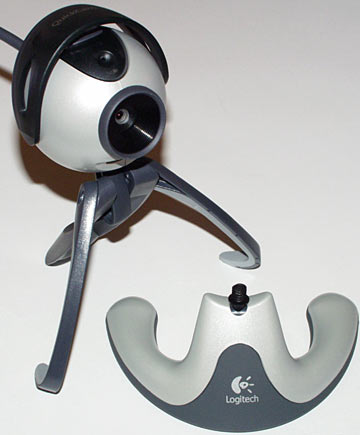

With the fascia off, we have access to the camera’s PCB.

Another thing we notice is the fake shiny plastic surround which tries to give users the impression of a large glass lens, when the lens itself is much smaller. The first thing we notice is the grey plastic fascia unclips from the front of the camera to reveal the screws holding the camera together. Of course, there are the mandatory few pieces of paper for support and regulatory reasons and to get you started. Nothing fancy about connectivity either, using 3.5mm TRS analog jacks. The cable itself is extremely thin – so maybe it’s better just to save your AU$1 and buy the camera alone. The body itself has a fold-out design so it can just hang onto your display as has been the norm of modern webcams.Ī very flimsy headset is provided with a flexible boom mic. It’s got a nice shiny grey plastic fascia, rather subdued. Of course, when you buy a webcam, that’s what you get – a webcam with integrated microphone and a single USB 2.0 connection with ferrite bead suppressor. The camera comes with a two-year warranty. Of note is that the video quality is rated as “Good” and the focus type is Always focused for 40cm and beyond which, in other words just means fixed focus. Specifications and support information are given on the sides and bottom of the box. I suppose the second half of the blurb of “flexible and adjustable” is somewhat true, but who moves their webcam around (and not their device) during a video-chat anyway? The box encourages on to go “beyond built-in” – although seeing as many laptops today provide even higher resolution sensors, it’s hard to see just how far beyond built-in this product might actually go. The product comes in a colour thin-card box with a window showing off the webcam, and an icon indicating the headset is packed inside. I decided to part with the extra AU$1 just to see what I was getting.
#Logitech quickcam webcam 720p#
It has the Logitech Quickcam C270 webcam, which is the lowest-cost 720p capable webcam in Logitech’s line-up and adds a very basic headset for an extra AU$1. I settled on the Logitech Quickcam C270h Webcam and Headset bundle, available for about AU$26. So I was back on the hunt for another webcam – it didn’t have to be particularly high spec – it just needed to give a decent image for a good price. Further experimentation seems to show that the LifeCam Studio also has trouble with some of my Intel-based USB chipset ports with occasional corruption of image but no hard-lock-up, whereas on my AMD-based reviewing machine, everything was okay. With the Raspberry Pi, we got very frequent image corruption, and dropouts which necessitated a hard reset to recover from. I tried using my Microsoft LifeCam Studio, which I previously reviewed, and there wasn’t much joy. Continuing along with another webcam-related post, in the past month, I was experimenting with Raspberry Pi and webcams.


 0 kommentar(er)
0 kommentar(er)
